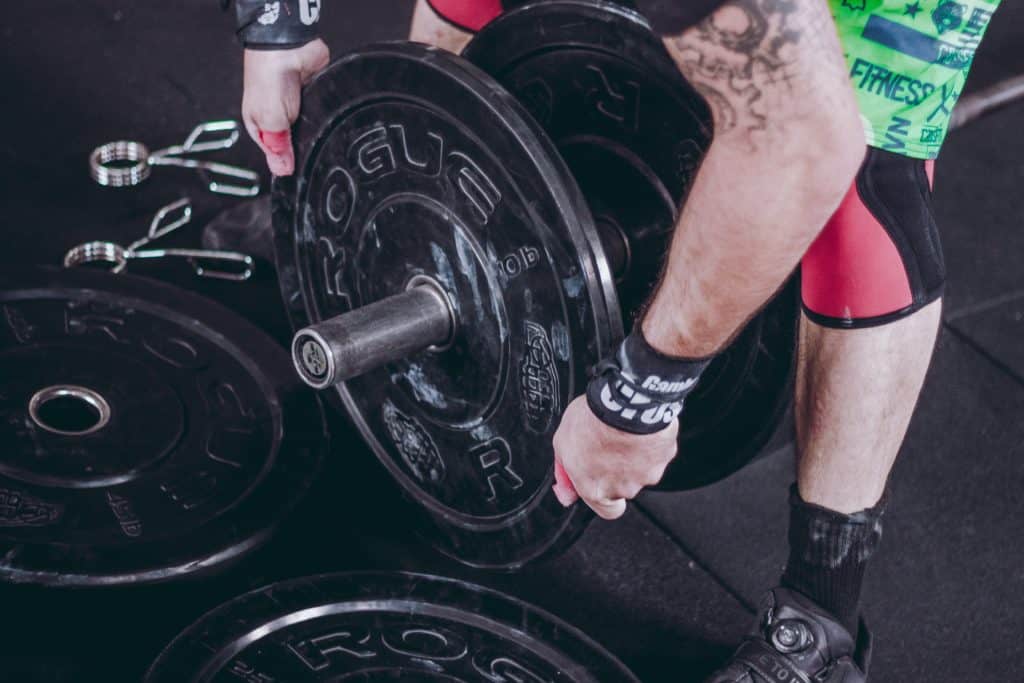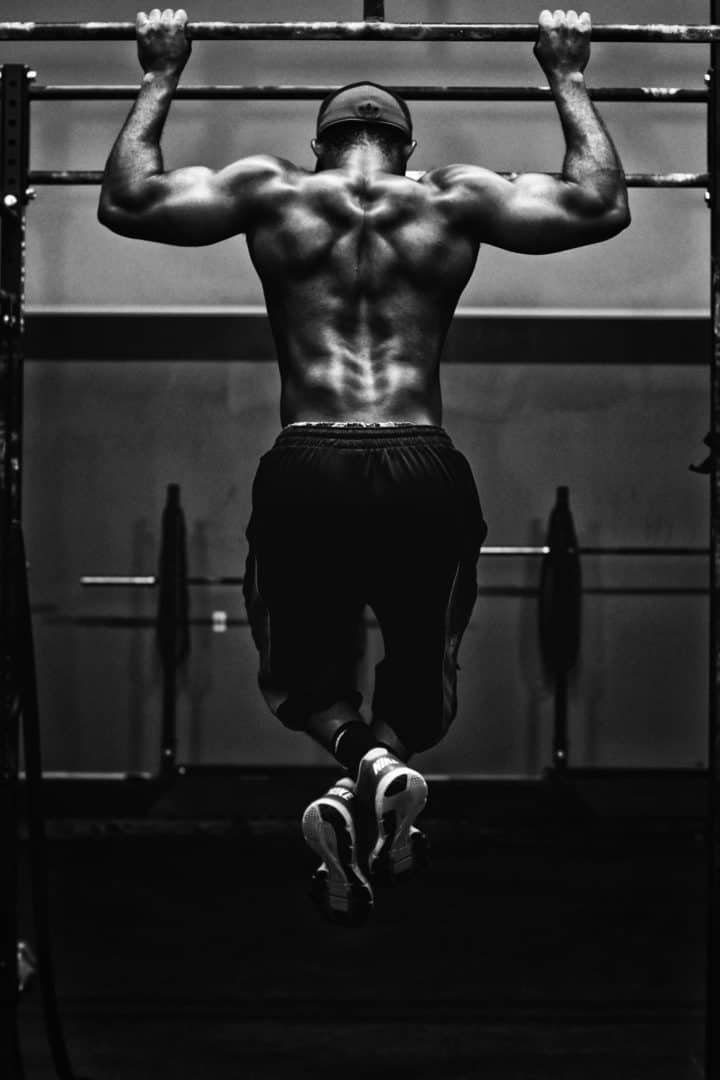Last Updated on March 15, 2021 by
The Only Beginner Workout you’ll ever need
So, it’s the new year and you’ve decided to get a gym membership and get into the best shape of your life. And you’re wondering ‘What is the best Beginner workout program?’
Well you have come to the right place. Maybe you have already stepped in to the gym, hit the treadmill and a few machines. But were to intimidated, to go to the free weights room.
Thanks to the fridge with arms and legs using 3 of the benches to swipe Instagram. Not to worry!
We have all been there with starting out nerves, but with this beginner workout article, we will guide you through the basics of everything. Gym jargon, exercises, how to progress, and everything you NEED to know to get started off effectively.
So, get out your pen and paper and let’s get started.
What is a rep/set?
So our first step in the beginner workout program, is to understand some of the slang or terminology. You may ask, ‘What the bloody heck are Sets?’ Or, have similar questions around gym vocabulary.
As these words seem to come from nowhere, (they usually do). From an outside perspective it can be confusing. Although I perceive some as ‘bro science’ most are important to know.
For example, you don’t want to make the mistake of mixing up sets and reps. Here is the comprehensive beginner workout program, dictionary of basic universal gym jargon.
- Reps – The amount of singular repetitions of an exercise you perform, e.g. if you perform 8 push ups you have done 8 reps.
- Sets – The number of cycles/groups of repetitions you do with a rest in between. E.g. if you do 8 push ups, rest and repeat you have completed 2 sets of 8 reps.)
- Rest – As the name states rest is the time you rest in between sets.
- Machines – Equipment that is set with a predisposed range of motion that you cannot change These take up the space in most gyms.
- Free weights – Equipment i.e. Dumbbells, barbells, plates that is not attached to anything.
- Dumbbells – A small hand sized bar with weights on either side.
- Barbells – A long steel bar that weight can be stacked on either side to.
- Plates – Circular weights the you can load onto barbells or use individually.
- Isolation Movements – Isolation exercises are movements that only train a singular muscle a good example of this is the bicep curl.
- Compound Movements – Exercises that utilize more than one muscle when performed, an excellent example of this is the Back Squat. We will be touching a lot on compound movements. As these are the best bang for your buck, in terms of ‘Gains’ and time management.
- Progressive Overload – Progressing on your lifts whether that be adding extra weight, extra reps, extra sets, etc. Take note of this, this is the single most important thing for progression in the gym.
- Reverse Pyramid Training/RPT – A rep regime where you will start with a heavier weight and lower reps. Then progress to a lighter weight with higher reps, as the sets progress.
- Gains – A phrase used for gained muscle or the scientific word hypertrophy, for example “After using that protein powder I’ve got mad gains”. This word is the epitome gym culture so it’s important you’re aware of the meaning.
The Beginner Workout program cheat-sheet
Since we’re just starting out it’s best to keep it plain and simple, yet effective. Rather than focusing on doing drop sets, sprinting on the spot, whilst bench pressing 200kg all at the same time.
Which is how complex most of the fitness industry makes it seem *cough cough, Men’s health.
In reality, it’s simpler than you think. In the beginner workout program, we will focus on compound movements (with some isolation). Progressive overload, technique, working on the right body parts, simplicity and the dietary guidelines to fit all the pieces together.
Before we get into the exercises, we’re going to touch on a few things.
Firstly, for success with the beginner workout regiment, you must remember. Progressive overload, progressive overload and more progressive overload! This is by far the most important concept to grasp when it comes to lifting.
Which most people neglect when they start off, including me! Every time you go to the gym, aim to lift heavier and/or add extra reps. That Is how you will grow bigger and get stronger.
As the muscle will only grow and adapt if it is under more pressure than before, end of.
Firstly, how to implement RPT (reverse pyramid training) in the beginner workout program. RPT isn’t necessary with isolation movements just compound lifts.
So, on your first set of compound lifts you should aim to get 4-6 reps. And on your second set you will decrease the weight by 20%, and aim for a rep range of 7-12. You can keep the weight the same for the following sets the first two sets, are the most important.
The reason for this is so you can lift the heaviest possible weight first. To avoid fatigue, and to also hit all the rep ranges available. With the purpose of recruiting all the muscle fibers possible.
Since your muscles are constructed out of a mix of slow twitch muscle fibers (type 1). Which you will recruit with higher rep ranges in conjunction with lighter weight.
And fast twitch muscle fibers (type 2). Which you will recruit with a lower rep range and heavier weights.
Now you are aware of those important factors let me introduce you to the beginner workout lifting plan! That we will split over 3 days in a week.

Beginner Workout Upper 1
- Barbell bench press 4x sets(Compound movement, Implement RPT) For overall chest development specifically the mid chest which is most important for overall size. This will also target the Anterior Deltoid (front shoulder muscle) and the Triceps.
- Incline dumbbell press 4x sets (Compound movement, Implement RPT) This will focus on the upper chest. Which is responsible for giving you the plate of armor look on your chest. This also targets the previously mentioned muscles for the Bench press.
- Machine chest fly 4x sets (Isolation movement) For medial chest development.
- Triceps extension 4x sets (Isolation movement) For overall Triceps growth.
- Lat pull down 4x sets (Isolation movement) This will target your Latimus Dorsi muscles / Lats. The muscles that give the impression of wings underneath your armpits.
- Lateral dumbbell raises 4x sets (Isolation movement) The most important exercise in shoulder width. Is by far the lateral dumbbell raise, which targets the Lateral or side head of your Deltoid/shoulder muscle.
Beginner Workout Lower 1
- Barbell front squat 3x sets (Compound movement, Implement RPT) The barbell front squat is a king of exercises. I have included this in the beginner workout rather than the back squat due to the more pronounced Quad development. This exercise will target your Quads, Abs, Hamstrings, Traps, Lower back, Glutes and many more!
- Barbell sumo dead lift 3x sets (Compound movement, no need for RPT) Aim for 7-12 reps throughout. Another king of all exercise is the sumo dead lift. I have chosen this over the conventional dead lift because of the focus on the hamstrings it has. As in this program there is no Hamstring isolation work. And so, this exercise will work the Hamstrings, Glutes, Lower back, Traps, Biceps, Quads and multiple others.

Most kinesiologists (professionals who investigate the study of movement). And even doctors agree that if you had to choose only 2 exercises it would be variations of the dead lift and squat.
Not only does it work many muscles at once, in men it also increases testosterone. That is why I have included these supreme exercises in the beginner workout routine for men.
- Leg extension 4x sets (Isolation movement) This focuses on the quads.
- Calf press on machine 4x sets (Isolation movement) As stated in the name of the exercise. The emphasis of this movement is on the calf muscles.
- Quad press 4x sets (Compound movement, no need for RPT) Aim for 7-12 reps throughout) The quad press activates mainly the Quads and Glutes.
- Cable crunch 4x sets (Isolation movement) Our first ab exercise of this workout! This particular exercise will focus on your upper Abs. And will have some interaction with your Serratus muscles (the slit looking like muscles beside your ribs.)
Beginner Workout Upper 2
- Overhead barbell press 4x sets (Compound movement, Implement RPT) Another great movement. This will focus on all of your Deltoid heads. But the most emphasis will be on your anterior Deltoid (front shoulder muscle). It will activate your triceps, Serratus muscles, abs and more minor muscles in your upper back.
- Bent over barbell row 4x sets (Compound movement, Implement RPT) The best exercise for back width is by bar the Bent over barbell row. This supreme movement will activate much of your back and more. Including your Lats, Rhomboids, Traps, Biceps, posterior Deltoid, Spinal erector (lower back) and more minor back muscles. Lateral dumbbell raises 4x sets (Isolation movement) See upper 1
- Lat Pulldown 4x sets (Isolation movement) See upper 1
- Bicep curl 4x sets (Isolation movement) The most famous newbie exercises this movement primarily focuses on building your biceps.
- Reverse crunches on bench with medicine ball 4x sets to failure (Isolation movement) Our second ab movement on the beginner workout program. This movement will put emphasis on your lower abs.
Rest
When it comes to rest, to keep it simple you will do a flat rate of 2 minutes rest/intervals in between sets.
Rest is vital when it comes to weight training. As it is necessary to replenish your muscles and most importantly your ATP-PC (Adenosine Triphosphate Phosphocreatine) system.
Which is responsible for the energy used in muscle contractions. As well as replenishing your stored muscle glycogen which is our main source of energy.
Frequency
Since this is a beginner workout, you won’t be going balls to the wall straight away! Your CNS (Central Nervous System) and muscles need proper time to recover after a hard workout.
And so, for this beginner workout program we are only going to be training 3 x per week, and rest on the weekends.
But if you would like to mix the days around that’s fine, as long as you are NOT lifting on consecutive days! As this will affect your progress for future sessions and possibly cause over training.
After you complete the beginner workout program, you can progress to a more frequent training split.
Intensity
Now we come to intensity. As you are reading the beginner workout plan, I expect you are new to the gym. For now, we will be focusing on getting you accustomed to it.
Rather than having you jump into the deep end, I would like you to lift with a moderate intensity. Equating to leaving 2-3 reps in the tank with each set.
Once you have learned, and gotten used to the exercises you can go up on the intensity scale. Leaving 1 in the tank per set. Then to failure, then to half reps, and even quarter reps past failure, to break the muscle down as much as possible.
Leading to hypertrophy, although this is at a late intermediate-advanced stage. But to summarize leave 2-3 reps in the tank from failure per set.
Beginner Workout Lifting Tips
Tip 1 – For information on how to perform these exercises with correct form. I recommend watching demonstrative videos rather than me presenting instructions by text. As it is easier to follow if you can visually see it performed.
I suggest watching either Jeremy Either or Jeff Nippard. Who can easily be found on YouTube. As they present their points in a easy to understand way, yet their guidelines are always backed by science and studies.
Tip 2 – REMEMBER PROGRESSIVE OVERLOAD! I can’t stress this enough. If you don’t try to add extra weight or reps each week you will not get stronger or bigger end of story. If there’s one thing you take away from this article let it be this.
Tip 3 – Use a gym tracker app, using an app will help you progress each week, and I am talking from personal experience. Before I would try to remember how much I lifted until the next session and would wonder why I am not progressing? It’s because I was forgetting each and every time! Each rep matters, so I suggest downloading an app such as MyFitnessPal.
Why the beginner workout program?

You may have some questions as to why some of the exercises have been chosen in the beginner workout routine plan. I mean why wouldn’t you?
The fitness industry is full of anecdotal ‘facts’ and statements, for e.g. “Want to lose fat? Eat more!” or “Yeah aim for 8-12 reps for size or something.”
Without taking any consideration for the weight on the actual plates! So unlike other programs I’m going to divulge into the actual reasoning behind the choice of exercises for this beginner workout plan.
First of all, what we are aiming for is the sought-after V shape! This is what you should be aiming for.
Studies have found the V shape physique in men to be associated with increased testosterone, masculinity, perceived dominance and attractiveness in woman. Here is a reference if you wish to view the study.
(Dijkstra & Buunk, 2001; Singh, 1994), B. J. Dixson, Grimshaw, Ormsby, & Dixson, 2014; Lassek & Gaulin, 2009).
And so in the beginner workout routine for men program, we have more emphasis on the Latimus dorsi muscles or the Lats, to give you the overall width. Contributing to the V shape.
As well as extra emphasis on the Delts or shoulders. And more importantly the side Delts which adds extra width onto the aforementioned lats and provides a capped look.
Beginner Workout Nutrition, Diet & Lifestyle

Now we have reached the other vital part of training on the beginner workout plan. That is often, neglected and misunderstood. Which is understandable, in today’s age fitness industry.
With self-proclaimed ‘health gurus’ and dietitians, who are often overweight! Whilst they try to push their ridiculous notions of restriction and straight up blacklisting certain foods with their fad diet.
Such as the ‘Keto’ diet for example, which completely cuts out and minimizes your body’s intake and reliance on carbohydrates. Which is your body’s main energy source (the Glycogenic system), and people wonder why they get sick. It is not sustainable!
It’s a maze out there. But not to worry I am here to help and simplify. That is why much effort has been put in the the beginner workout plan. With the intention of putting out the truth.
Let’s cut the crap and set it straight, the beginner workout plan is all about sustainability. And that is key to any program. If you are looking to lose weight, guess what?
Eat less than your body consumes for energy i.e. calories in calories out. Or if you are looking to gain weight once again, eat more! Which sounds too good to be true, but it is that simple. It’s just the industry of fad diets and programs looking for a quick payday that won’t tell you that.
Measuring how many calories you should consume
First of all, we will need to calculate the calories needed to maintain your current body weight, no weight loss or gain. I could lay down a long winded scientific calculation to follow, but ain’t nobody got time for that.
So just go to BodyBuilding.com for your specific maintenance caloric needs. Which we will use a guideline to go off of for other dietary goals such as bulking or cutting.
The Beginner Workout Fat loss (cutting) Guide
So now we’ve briefed upon how simple it really is, let’s go through the guidelines of fat loss through calorific restriction.
To keep it simple we will be cutting off 500 calories per day through your diet. And thus, in a week that is 3500 calories. One pound (lbs) of fat is worth 3500 calories. So if you were to do this everyday for 12 weeks, you should expect to burn a whopping 12lbs for fat!
Let’s put it into action. So you’ve found your maintenance calories and it’s states 2100 calories to maintain what you already have. Simply reduce your calorific intake by 500, which in this case would be 1600. And you are set for fat loss!
The Beginner Workout Weight gain (Bulking) Guide
For wight gain or (bulking) to grow muscle as it is often referred to. Use the same equation for fat loss, but add on an extra 500 calories to your maintenance amount. Instead of deducting 500. And no more than 500! As you will put on too much fat.
The Beginner Workout Protein intake Guide
Protein is the most important dietary factor when it comes to building and maintaining muscle, as well as satiety (keeping you full). When on a calorific restricted diet and in general for that matter.
And so, the general consensus when it comes to protein intake on a diet. Is around 0.9 grams of protein per lb of body weight. So for example a 155 lb person should consume 140 grams of protein per day.
Macros (macronutrients)
You don’t need to focus on macros at this point. Since we are implementing a much better calorie-controlled diet rather than IIFYM (If it fits your macros). So just keep track of your protein intake for now.
How to track your calorie intake (IMPORTANT!)
There is no point in dieting in a calorific deficit whilst on the beginner workout plan or surplus. Without tracking and logging your calories. It is of the upmost importance that you physically log them by hand or via an app, you can use MyFitnessPal once again.
The best and most accurate way, is to weigh all of your food out properly. Rather than doing it by eye or using the generic calorie details on the back of the tin. As these are often incorrect.
Personally, when counting calories I weigh out all of my food, find the calorific sum of the food. And subtract it from my daily calories in my calculator app on my phone.
But there are many ways you can do it, but just be sure to be counting your calories accurately for the best results.
The Beginner Workout 80/20 Diet Diet Plan
So, we’ve all tried those crash diets before with just eating salad, grilled chicken and brown rice… I think we all had the same outcome. For me I completely crashed and headed for the junk. Because these absolutism diets are not sustainable.
So I’m suggesting the 80/20 ratio diet. Meaning making your diet 80% healthy whole foods and 20% ‘junk’ foods. As you need to enjoy the diet to some degree and make it sustainable.
Supplements
In all honestly supplements aren’t a necessity as most people would have you believe.
The vast majority of supplements you can get from a decent protein-based diet. Barring PRE workout (which gives you a pump) which a strong coffee itself can do.
However, supplements such as Whey protein can be used out of convenience. To supplement for your protein intake, if you are to busy to cook for example.
But, real food always reigns supreme. Moving away from Protein supplements. As for things like; Creatine.
Which does have some legitimate uses. Is better to implement when you are more experienced in lifting and when diminishing returns becomes a factor.
Beginner Workout Nutrition, Diet & Lifestyle Tips
Tip 1 – When cutting, once every week have a re-feed day NOT a cheat day. A re-feed day will help keep you on track by catering to your cravings and hunger. As well as a mental reward to look forward to at the end of the week.
Still implement the 20/80 healthy eating ratio and protein intake but do not have a cheat day! Where you eat whatever you want, whenever. As you can easily consume a huge number of calories and ruin the progress you’ve made for the week.
Tip 2 – Be aware of the use of carbs before a workout. As carbohydrates are the main dietary source of glycogen, which we discussed before is our main source of energy.
So, eating a Carb heavy meal can be used as a PRE workout boost to aid you in your gym performance.
Tip 3 – Proteins use in satiety. Protein is the most filling macro nutrient. So if you are cutting or just don’t to want to feel hungry later on in the day. Consider consuming a protein heavy breakfast or meal early on in the day.
Tip 4 – And finally, PATIENCE! Diet and even training are all about consistency, consistency and consistency! If you stick to these guidelines you will get to your goals.
Beginner Workout Summary
Now we’ve reached the end of the beginner’s workout plan. From gym slang, to nutrition, and back to why you clicked on this article… Lifting!
We have covered many important factors and I know it may be hard to retain all of this information. But if I could only give you a couple pointers, to conquer this routine it would be:
- Consistency
- Progressive overload
- Technique
- Diet accountability (track your calories)
- Patience
I hope you’ve enjoyed reading the beginner workout program. As much as I’ve enjoyed making it. For now happy gains, and don’t forget to keep making those FOREIGN GAINS!








